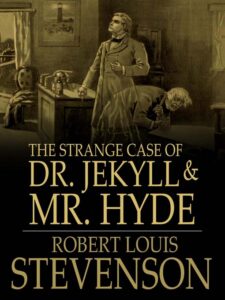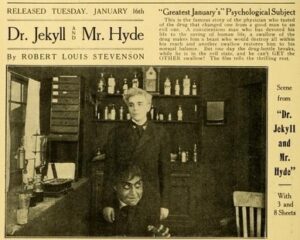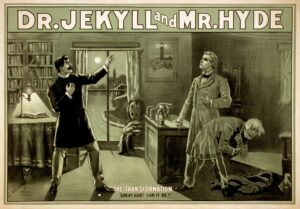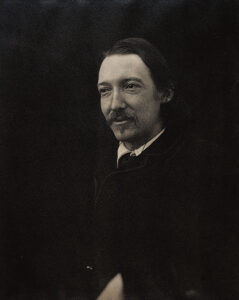Prometheus as Performer: Toward a Posthumanist Culture? The Georgia Review
The article presented five different scenes with each wearing various masks in what is called a fiction or myth. Each scene has different actors describing their individual perspective as regards Prometheus and the posthumanism in the context of the universe. They considered man from the perspective of his sub consciousness and the relationship between man and the universe. They strove to ascertain the limit of man with respect to the continuity or the discontinuity of the universe at large. The article is full of several questions some of which were answered within the various scenes that characterized the story while others remained unanswered probably due to the fiction being portrayed about man. Since the article is about Prometheus and posthumanism, it is necessary for us to understand the meaning of these terms as portrayed by the article.
“Prometheus” is said to be a Titan according to myths by the Greek, who was reputed for being a trickster who in the process gave human race the gift of fire and metal work skill which resulted into being punished by Zeus by assigning an eagle to eat his liver and chained him to a rock (Cartwright, 2013; Hansen, 2005. p. 310). Furthermore, he was referred to as someone who is highly intellectual and had a foresight thus championed the battle between the Titans and the Olympian gods led by Zeus to gain dominance of the heavens and switched sides during the battle owing to his double-sidedness (Cartwright, 2013)
Back to the article, it was said that his double nature was theological, political and epistemological (page 832). Post humanism however in simple terms refers to the existence of things beyond or after human. The five different scenes have something in common as regards the way they viewed the human mind or sub consciousness with the universe bearing in mind the myths therein. We see a statement as “marriage between earth and sky” on page 835 as the foreshowing of Prometheus being an expression of one of his attributes mentioned earlier within the second paragraph. This article also challenged the Titan beyond his achievements in the past thus pushing the universe beyond what it appears to be in the present. It suggested that Prometheus should harness the limitless tricks and intellectual abilities by channelling it to benefit mankind beyond time because posthumanism is hinged on this. We see a statement to back this up:
“As for you, Mythotext I must tell you this. Prometheus may be a vague metaphor of a mind struggling with the One and the Many. Yet, I prefer to view his struggle in narrower perspective. His mind is where Imagination and Science, Myth and Technology, Language and Number sometimes meet. Or put it both prophetically and archetypically: Prometheus presages the marriage of Earth and Sky. Only then, perhaps, will post humanism see the dubious light of a new day” (page 835).
The idea behind this article is to examine the mind of a common man as that of Prometheus. Several questions were raised in the different scenes by the characters within the story all tending towards what will become of universe. All along the article, Prometheus was depicted as the one responsible for the existence of the way earth and the activities within the earth are performed and that man is exactly the aspect of his performance which will keep changing. A statement to back the aforementioned states thus:
“Prometheus is our performer. He performs Space and Time; he performs Desire. He Suffers. We ourselves that performance; we perform and performed every moment. We are the pain or play of the Human, which will not remain human. We are both Earth and Sky, Water and Fire. We are the changing form of Desire. Everything changes, and nothing, not even Death, can tire” (page 850)
Although, the article did not deny that there were several versions to the history of the Prometheus, it gave attention to the most familiar of all the stories. For example in this statement we see this clearly stated which reads thus, “Prometheus, son of Lapetus, Titan turncoat and trickster. There are many versions of his stories, but the main outlines are familiar” (page 832). The feature that is also a very serious concern in Prometheus is that of fire which was linked to the imagination. The narrators lets us know in this article that for us to be satisfied beyond now, we must desire to experience better what we do now. In other words, for the ingenuity of posthumanism culture, we must explore beyond time and space what we see presently and that this can only be a product of our imagination or thought which will form what speaks for the universe as a whole since it constitutes “a one and a many” as mentioned on page 832. The key therefore to understanding posthumanism was hidden in the idea of changing attributes of human which can be exemplified in this quote thus, “We need to first understand that the human form-including human desire and all its external representations-may be changing radically, and thus must be re-visioned. We need to understand that five hundred years of humanism may be coming to an end, as humanism transforms itself into something that we must helplessly call posthumanism” (page 843).
The article explores the contributions of many scholars who are passionate about the human life on the earth as a whole and complete entity meaningful enough to thrive. This includes the works of philosophers, poets, scientists and mystics (page 833).
QUESTIONS
What is the usefulness of the attributes of Prometheus to mankind?
What are the similarities between Prometheus and Posthumanists?
Can there be a comprehension of the universe? How and in what ways?
REFERENCES
Cartwright, Mark. “Prometheus.” Ancient History Encyclopedia. Ancient History Encyclopedia, 20 Apr 2013. Web. 06 May 2018
Hassan, Ihab. “Prometheus as Performer: Toward a Posthumanist Culture?” The Georgia Review, vol. 31, no. 4, 1977, pp. 830–850. JSTOR, JSTOR, www.jstor.org/stable/41397536.
William Hansen, Classical Mythology: A Guide to the Mythical World of the Greeks and Romans (Oxford University Press, 2005), pp. 32, 48–50, 69–73, 93, 96, 102–104, 140; as trickster figure, p. 310.











